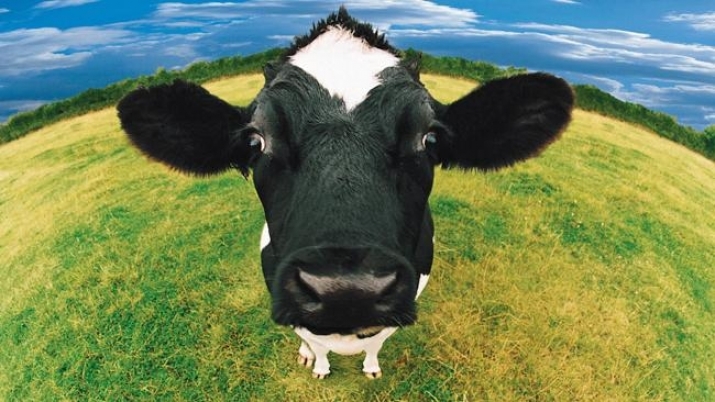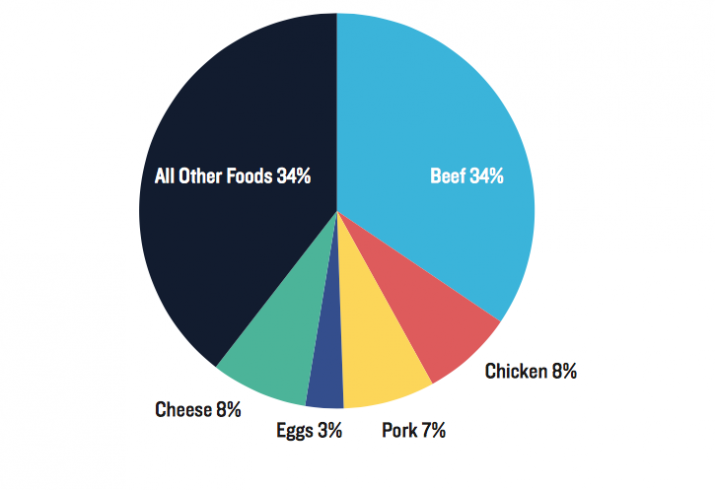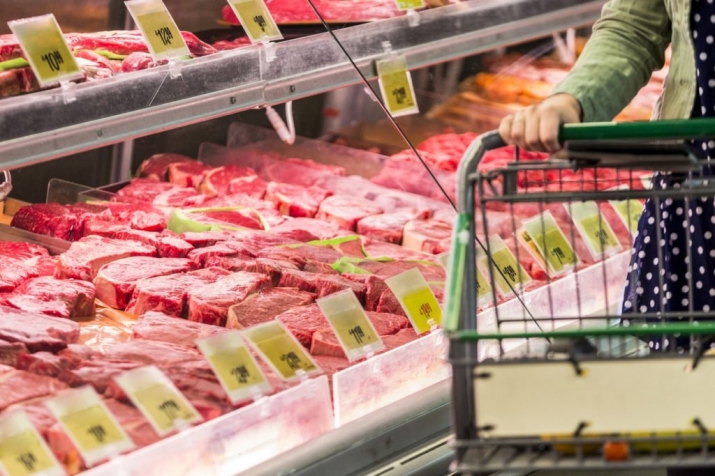NEWS
Research Points to Environmental Benefits as Americans Eat Less Beef
 From feedingnutritionnuts.weebly.com
From feedingnutritionnuts.weebly.comAmericans are eating significantly less beef than they were 10 years ago and the environment is benefitting, according to a recently published study, which pointed to the corresponding decline in the carbon footprint of the average American diet.
Dietary changes over the last decade—driven health, environmental, and ethical concerns, among others—resulted in beef consumption among Americans declining by a surprising 19 per cent between 2005 and 2014, according to research by the Natural Resources Defense Council (NRDC), a New York City-based, non-profit international environmental advocacy group. Lower consumption of other resource-intensive food products, including orange juice, whole milk, pork, and chicken, in the same period saw diet-related carbon emissions decline from 1,932 kilograms per capita in 2005 to 1,762 in 2014, the study showed.
The decline in beef consumption was equivalent to an estimated 185 million metric tonnes of climate-warming pollution: “roughly the equivalent of the annual tailpipe pollution of 39 million cars,” the research, published in March, revealed. “Americans’ reduced consumption of other products—such as milk, pork, shellfish, and high fructose corn syrup—accounts for the remaining emissions cuts,” which totaled a combined reduction equivalent to the emissions of 57 million cars, despite 9 per cent population growth in the US over the same period. (Natural Resources Defense Council)
 Relative contributions of the top five greenhouse-gas-intensive foods and all other foods to total per capita food-related emissions in 2014. From nrdc.org
Relative contributions of the top five greenhouse-gas-intensive foods and all other foods to total per capita food-related emissions in 2014. From nrdc.orgRearing livestock on an industrial scale—which encompasses the production of meat, milk, and eggs—is one of the main sources of global greenhouse gases, accounting for more than all the world’s aircraft and automobiles combined. Raising animals for food also requires massive quantities of water, grains, and land. In fact, some 30 per cent of the world’s total ice-free land is dedicated to supporting chickens, pigs, and cattle that are eventually consumed as food, rather than for cultivating grains, fruit and vegetables that could feed humans directly. A 2006 report by the Food and Agriculture Organization of the United Nations titled Livestock’s Long Shadow, states: “The livestock sector is a major stressor on many ecosystems and on the planet as a whole. Globally it is one of the largest sources of greenhouse gases and one of the leading causal factors in the loss of biodiversity, while in developed and emerging countries it is perhaps the leading source of water pollution.” (Food and Agriculture Organization of the United Nations)
“Despite a drop in consumption, beef still contributes more climate-warming pollution than any other food in the American diet. In fact, it comprised approximately 34 per cent of total diet-related per capita climate-warming pollution in 2014, the last year for which data is available,” The NRDC report noted. “Pollution could have been cut even deeper had Americans not simultaneously increased consumption of other carbon-intensive foods like cheese, yogurt, butter and other foods,” (Natural Resources Defense Council)
While the NRDC is hailing the declining popularity of beef as a net positive in the battle against climate change, the news is not all good. The beef industry criticized the NRDC data for not taking into account beef exports from the US, which it says grew markedly over the same timeframe. Despite domestic consumption trends, data from the US Department of Agriculture indicates that beef production in the US remained relatively stable, from 11.3 billion kilograms in 2005 to 10.9 billion in 2014. “It’s not fair to link consumption numbers domestically to production numbers domestically,” said National Cattlemen’s Beef Association (NCBA) spokesperson Hillary Makens. (Inside Climate News)
 From organicauthority.com
From organicauthority.comHowever, Sujatha Bergen, a policy specialist at the NRDC, insisted that the NCBA’s reasoning did not diminish the impact that reducing beef consumption has had on the environment, saying the study showed that small dietary changes in were having a tangible impact. “There’s a very concrete association between reduced red meat consumption and reduced emissions,” she added. “Whether we realize it or not, Americans have been fighting greenhouse gas emissions with their forks.” (Organic Authority, The New York Times)
See more
Less Beef, Less Carbon: Americans Shrink Their Diet-Related Carbon Footprint by 10 Percent Between 2005 and 2014 (Natural Resources Defense Council)
Americans Ate 19% Less Beef From ’05 to ’14, Report Says (The New York Times)
Diet, Including Eating Less Beef, Dropped Americans' Carbon Emissions by 9% (Inside Climate
News)
American Beef Consumption Drops Nearly 20 Percent, NRDC Report Shows (Organic Authority)
Livestock's Long Shadow: Environmental Issues and Options (Food and Agriculture Organization of the United Nations)
Related news from Buddhistdoor Global
Buddhist Monk Matthieu Ricard: Veganism is the Key to Lasting Happiness
New Study Measure Impact of Chinese Buddhists with Vegetarian Diets on Greenhouse Gas Emissions
Lab-grown Meat, a Humane Alternative to Factory Farming?
World Resources Institute Report Underscores Heavy Environmental Impact of Meat Industry
Revolutionary Self-sustaining Eco-village Planned in the Netherlands
Related features from Buddhistdoor Global
Halting the Economics of Extinction: How a Spiritual Resurgence in China Could Save the Biosphere
Wildlife on the Brink
Buddhist Perspectives on Sustainable Economic Development
Reinstating Animal Rights in Sri Lanka














